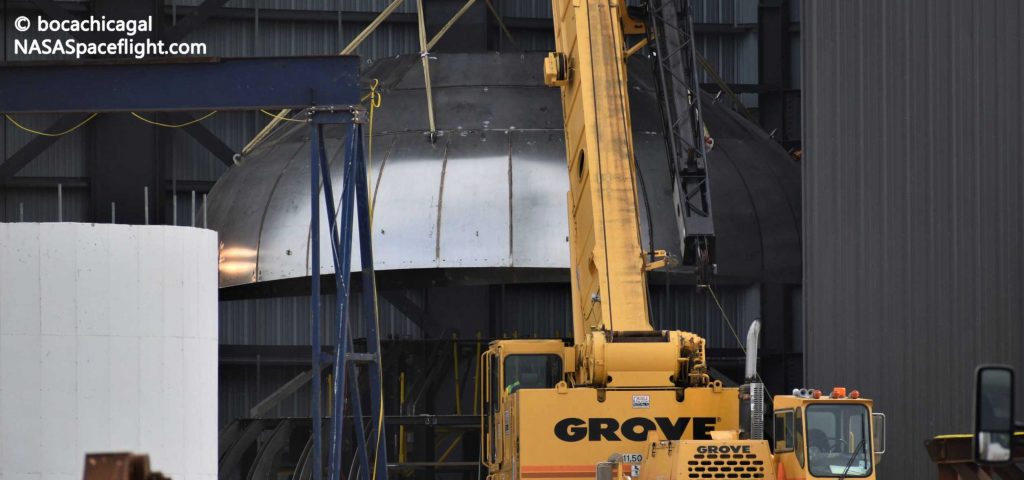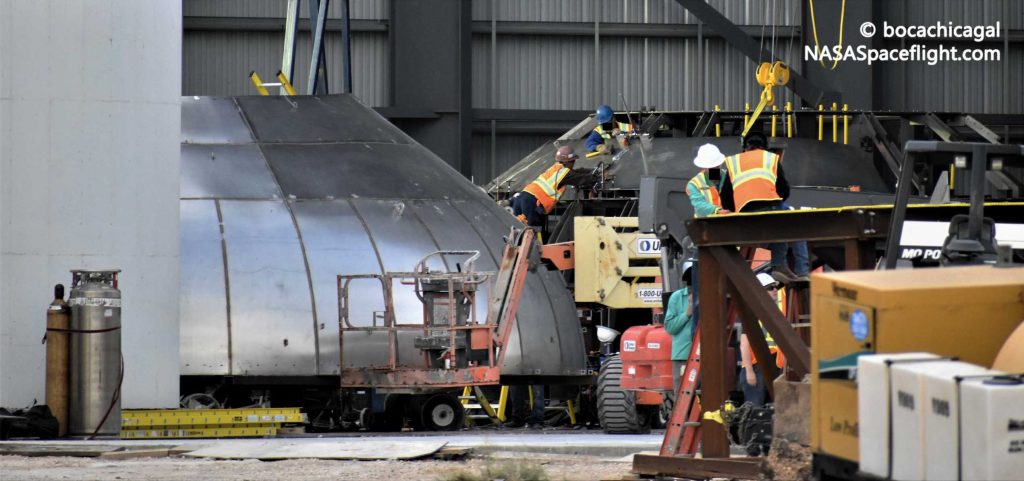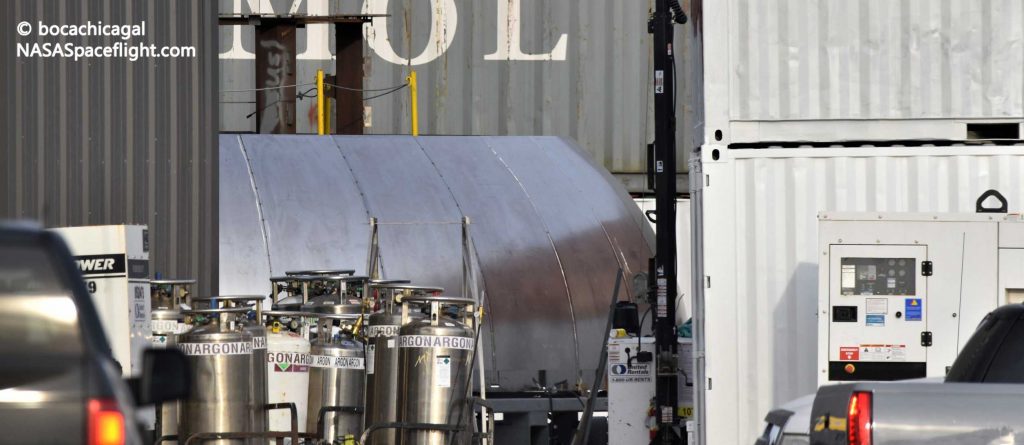SpaceX CEO Elon Musk says he has been working through the holidays at the company’s Boca Chica facilities to get Starship’s “most difficult part” ready for the next-generation spacecraft’s next prototype and flight tests.
Known as tank domes or bulkheads, Musk says that the hardware is the most difficult part of building and assembly Starship’s primary structure, referring to the steel engine section, tanks, and pointed nose that comprise most of the spaceship’s body. Starship’s primary structure must stand up to the rigors of all aspects of flight, including highly-pressurized propellant tanks, extreme G-forces during launches, orbital reentry, and more.
It was never officially determined whether the failure was intentional or not but during the first Starship prototype’s (Mk1) last test campaign, the vehicle experience an overpressure event while being filled with liquid oxygen or nitrogen. Localized to the weld connecting the upper tank dome to Starship’s cylindrical tank section, the dome essentially sheared off at the weld and launched hundreds of feet into the air, sending a shockwave through the vehicle that crumpled many of its steel structures as if they were aluminum foil.
It’s likely that Starship Mk1’s failure was an intentional overpressure event, meaning that SpaceX may have purposely pressed the vehicle’s tanks beyond their design limits to determine how structurally sound they were. What is less clear is whether the rocket burst before or after reaching its theoretical design limit.
For reference, SpaceX’s Falcon 9 rocket operates with its fuel and oxygen tanks pressurized to about 50 psi (3.5 atm) with localized pressures likely doubling or tripling near the bottom of both tanks during the first minute or two of launch. Some amateur back-of-the-envelope calculations from videos of Starship Mk1’s burst event suggest that it was pressurized to at least 60-75 psi (4-5 atm) at its upper tank dome, meaning that the pressure on its two lower domes and tank walls would have been even higher. If correct, those unofficial figures mean that Mk1 actually performed quite well considering the ramshackle facilities and unprecedentedly spartan methods used to fabricate and assemble it.
As such, Musk likely considers Starship’s tank domes the “most difficult part of [its] primary structure” in large part because of how difficult it is to make giant propellant tank domes simultaneously light and strong. Musk has previously implied that Starship Mk1 was more 200 tons (450,000 lb) empty while the ultimate goal for the spacecraft’s empty weight is closer to 120 tons, and a large portion of that weight savings will likely have to come from making its tank domes as light as possible.
In line with that educated speculation, the last month or so of SpaceX’s Starship work in Boca Chica, Texas has been marked by a distinct focus on building tank domes. In fact, Musk himself tweeted that he had worked all night with SpaceX engineers in Boca Chica in a bid to get dome production ready for Starship’s Mk3 prototype, the first Super Heavy hardware, and many more rockets to come.
Prior to Musk’s tweet, a Starship tank dome was actually shipped all the way from Florida to Texas and arrived earlier this month. Meanwhile, technicians have been briskly building up an additional dome using what appears to be a different method of integration involving new parts. SpaceX is currently attempting to weld Starship’s tank domes together from several dozen pre-formed sheets of stainless steel.
The sheets of steel assembled into the dome Musk showed on December 27th likely arrived in Boca Chica on December 13th, implying that SpaceX has managed to complete the majority of the first dome prototype – using a new process – in barely two weeks.




After SpaceX lifted the partially-completed dome off one of its custom assembly jigs, workers almost instantly began staging new sections of steel, beginning the process of integrating yet another tank dome – now likely the fourth on-site in Boca Chica. Meanwhile, at a nearby section of SpaceX’s Boca Chica production facilities, yet another dome was visible on the 28th. In short, SpaceX should soon have more than enough tank domes to complete the next Starship prototype – said to be a significantly improved and refined design compared to Mk1.
Known as Starship Mk3 (or Starship SN01), Musk says that the rocket – currently just a miscellaneous collection of separate parts – could (“hopefully”) be ready for its first flight as soon as February or March 2020.
Check out Teslarati’s newsletters for prompt updates, on-the-ground perspectives, and unique glimpses of SpaceX’s rocket launch and recovery processes.

(adsbygoogle = window.adsbygoogle || []).push({});
<!–
–>
var disqus_shortname = «teslarati»;
var disqus_title = «SpaceX's Elon Musk works through holidays on Starship's "most difficult part"»;
var disqus_url = «https://www.teslarati.com/spacex-elon-musk-starship-most-difficult-part/»;
var disqus_identifier = «teslarati-124638»;

